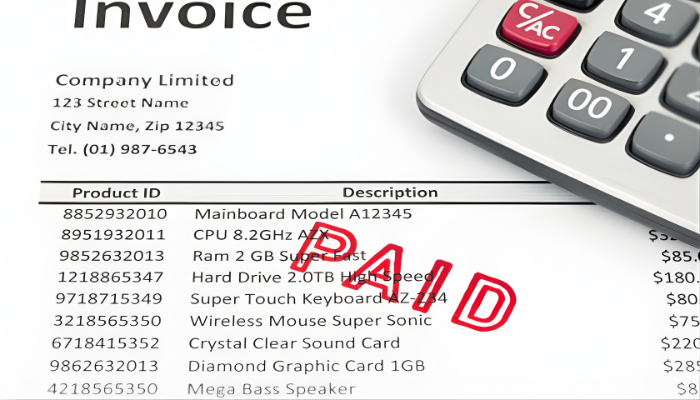
Storms, freezes, heat waves, the weather doesn’t wait until your business is ready. One day you’re running projects or filling orders, and the next you’re juggling delays, repairs, or clients who can’t pay on time.
Weather disruptions don’t just throw off your schedule; they throw off your cash flow. And if you’ve ever faced payroll while waiting on a late client check, you know how stressful that can be.
The good news? You don’t have to let the forecast decide your finances. Let’s look at how weather creates gaps, and what you can do to keep your business steady, no matter what blows in.

How Weather Knocks Cash Flow Off Balance
Even a “minor” storm can leave a major dent. Here’s how it typically shows up, plus steps to soften the impact:
- Sales stall when job sites close or fewer customers show up.
Tip: Keep a small reserve just for lost-sales days. Even a cushion of a few days’ expenses makes a difference. - Expenses spike with overtime, emergency repairs, or higher fuel costs.
Tip: Track which costs consistently rise during extreme weather. Knowing this helps you budget smarter or adjust pricing ahead of time. - Invoices slow down when your clients are dealing with their own delays.
Tip: Offer electronic payments or request partial upfront deposits to keep cash moving. - Seasonal prep costs rise when you stock up before revenue comes in.
Tip: Negotiate staged deliveries or extended terms with vendors so you don’t carry the whole burden up front.
It’s not always hurricanes or wildfires that cause trouble. Sometimes it’s a week of rain delaying construction or a sudden freeze stopping deliveries. For small and mid-sized businesses, even short disruptions can add up quickly, straining payroll, supplier relationships, and growth plans.

Why Planning Ahead Matters
Too many businesses wait until cash flow feels tight before taking action. By then, your options are limited and the pressure is high: payroll is due, suppliers are pressing, or the next project can’t start. That stress doesn’t just sit on your shoulders; it trickles down to your team, your vendors, and your customers.
The smarter move? Build flexibility before you need it. Think of it like storm prep. You don’t wait until the hurricane makes landfall to buy plywood; you get ready while the skies are clear. Cash flow works the same way.
Setting up funding tools in advance means you already have a plan when the weather throws you off track. Instead of scrambling, you can focus on projects, relationships, and trust.

Funding Tools That Keep You Moving
Traditional bank loans are often too slow or too rigid for short-term weather challenges. These flexible tools are built for businesses that need to stay nimble:
Invoice Factoring- How it works: Sell your unpaid invoices to a factoring company, and they advance most of the value (usually within 24–48 hours).
- Why it helps: You get paid now, not “Net 60.” It’s not debt, just faster access to money you’ve already earned.
- How it works: Use assets you already own, inventory, equipment, or receivables as collateral for a credit line.
- Why it helps: You’re putting existing assets to work. As your business grows, your borrowing base grows with it.
- How it works: Landed a big order, but can’t cover upfront supplier costs? PO funding pays the supplier until your customer pays you.
- Why it helps: Weather delays don’t have to mean missed opportunities; you can say “yes” to growth without draining your reserves.
Think of these less as “debt” and more as cash flow tools, designed to keep money moving when storms, freezes, or delays slow everything else down.

Operational Moves That Build Resilience
Money is only part of the equation. Pairing strong cash flow tools with smart operations makes your business far more weather-ready:
- Diversify suppliers. Relying on a single region or vendor leaves you exposed. Spread risk so one storm doesn’t stop everything.
- Build a reserve fund. Even setting aside 5–10% of operating costs gives you breathing room.
- Review your contracts. Understand payment terms and “force majeure” clauses that can delay obligations.
- Create backup plans. Generators, alternate logistics, or remote-work setups let you keep moving instead of waiting it out.
Preparation isn’t just about what you do in-house. There are also national resources designed to help when disaster strikes. FEMA maintains a Business Assistance hub that covers recovery programs, grants, and step-by-step guidance on staying operational during severe weather.
Businesses that combine flexible funding with solid operations bounce back faster, and with far less stress

You Can’t Stop the Weather, But You Can Stay Ready
No one enjoys planning for storms, but ignoring the risk doesn’t make it go away. What you can do is set up tools and practices that keep your business steady when conditions turn messy.
When the skies clear, you’ll be glad you weren’t stuck waiting on a late invoice or scrambling to make payroll. Instead, you’ll be ready to keep customers happy, and even take on new opportunities.
Because resilience isn’t just about getting through the storm, it’s about being ready to grow once the sun comes back out.














